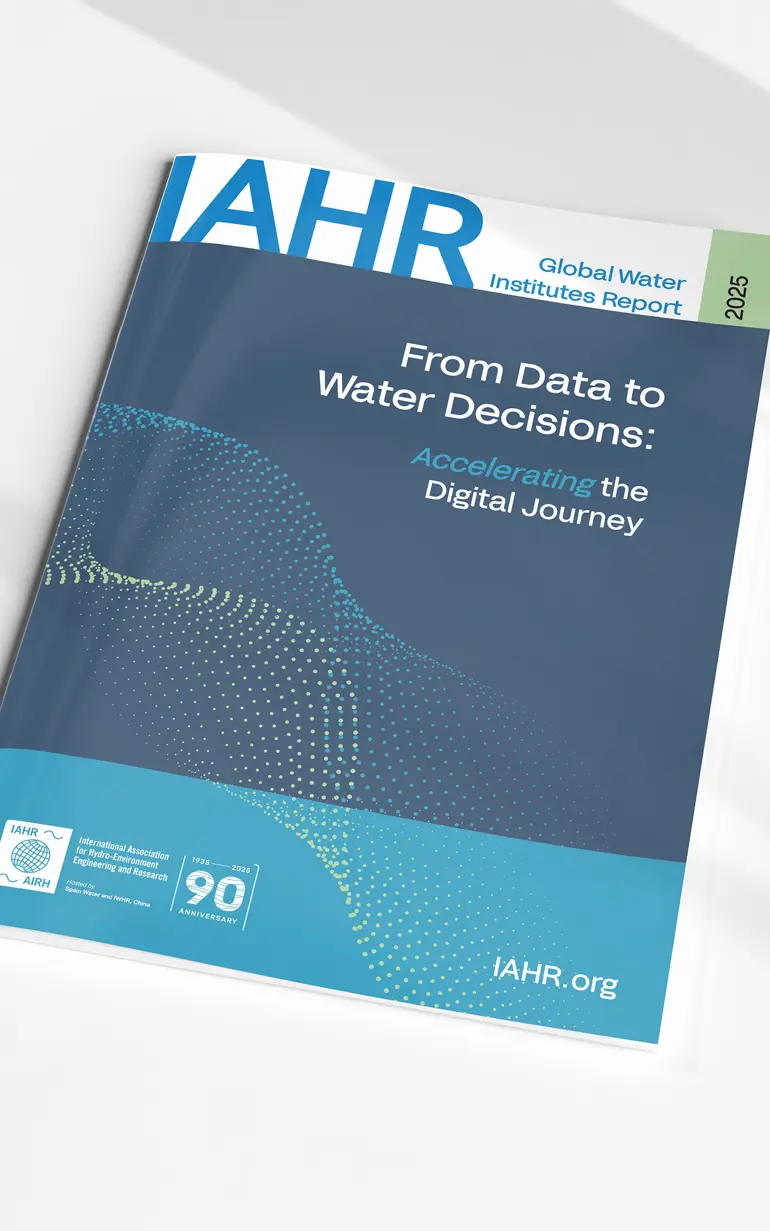
New global report charts the digital future of water management
Survey of 120+ water institutions highlights five technologies reshaping the sector and the risks that come with them.
A new international report offers timely insight into how digital technologies are changing the way the world manages water. Developed by IAHR in collaboration with DHI and other global research institutes and experts, the Global Water Institutes report on digital transformation ‘From data to water decisions – Accelerating the digital journey’ outlines how digitalisation is accelerating across the hydro-environmental sector and what needs to happen next.
At the heart of the report are five key digital accelerators that can transform water management systems across scales and geographies:
- Remote sensing: 80% of respondents already use or plan to use remote sensing, which provides essential data for monitoring and modelling everything from flood risk to water quality, especially in data-scarce or hard-to-reach regions.
- Data, sensors and Internet of Things: Enable real-time monitoring of water systems, supporting early warning, performance tracking and incident response in increasingly complex and climate-sensitive environments.
- Advanced modelling: The most widely adopted technology among respondents, with over 90% using models for scenario testing, optimisation and planning under uncertainty.
- Artificial intelligence and machine learning: Opening new possibilities for predictive maintenance, system forecasting and operational efficiency.
- Digital twins: Representing the full integration of data, models and real-time systems, digital twins are seen as a powerful tool for both short-term operations and long-term strategic planning.
Opportunities and risks in the digital water transition
Drawing on survey input from 127 respondents in 41 countries, the report shows broad alignment on the benefits of digitalisation – better prediction, faster decision-making and more efficient resource use. However, it also draws attention to a consistent set of risks:
- Data gaps: Inconsistent, inaccessible or poor-quality data remains a significant challenge.
- Technical capacity: Many organisations cite a lack of in-house expertise to process and apply digital tools.
- Cybersecurity and reliability: As systems become more connected, the exposure to cyber and infrastructure vulnerabilities increases.
- Ethical and social implications: Automation, AI and the shift toward digital twins raise questions about transparency, accountability and inclusion.
- Dependence on proprietary tools: Vendor lock-in is an emerging concern, especially around AI and platform integration.
A call for integration and collaboration
The report advocates for a more integrated approach to digitalisation, combining open standards, multidisciplinary training and collaborative frameworks. It highlights underused opportunities, such as leveraging open-source remote sensing data, cross-sensor data fusion and hybrid AI-physics modelling.
While the digital transition is already well underway, the report urges the water community not to see it as a purely technical journey. Governance, trust and human capacity must evolve in parallel. The report calls for greater collaboration across research, engineering, public agencies and the private sector to ensure digital innovation is both scalable and accountable.
The key recommendations from the report are:
- Increase use of open data and interoperable platforms
- Promote hybrid modelling approaches that combine physics and machine learning
- Support capacity development through training and institutional knowledge-sharing
- Ensure governance and ethical frameworks keep pace with digital innovation
The report is published under IAHR’s leadership as part of the organisation’s commitment to advancing knowledge and innovation across the entire water cycle. It was introduced at the IAHR World Congress 2025 in Singapore, with DHI colleague Henrik Madsen, Research Manager, presenting the sections of the report on Earth Observation data and digital twins.
How can we help?
With our global network of offices, we make sure you get the right answers to your local needs. Tell us about your water challenges and we will get back to you.